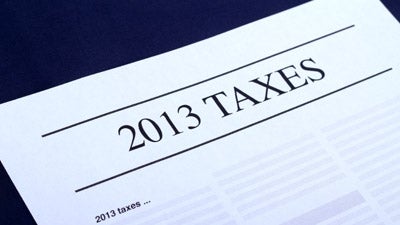Home > Finance > Tax and Accounting >
Maximize Tax Deductions Now to Save on 2013 Taxes
By: 1800Accountant

 Tax deductions can be quite valuable, because they reduce taxable income for the year. For example, a self-employed individual or independent contractor in the 25% tax bracket can save $25 in income tax for every $100 in deductions, while also saving as much as $15 in self-employment taxes for every $100 deduction from taxable income.
Tax deductions can be quite valuable, because they reduce taxable income for the year. For example, a self-employed individual or independent contractor in the 25% tax bracket can save $25 in income tax for every $100 in deductions, while also saving as much as $15 in self-employment taxes for every $100 deduction from taxable income.
You don’t have to earn much before tax deductions begin to make a huge difference in the amount you owe. For example, an income between $26,250 and $87,850 will put a single taxpayer into the 25% tax bracket, as will an income of $72,500 to $146,400 for a married couple filing a joint return.
Meticulous records and receipts are the keys to allowable tax deductions, and must be kept up to date. Records must be kept for seven years if you claim a business loss for any of those years. A tax authority isn’t likely to audit records for just one year, and most will audit three to 5 years of records at once.
To be deductible business expenses, a cost must be:
- Incurred in connection with your trade, business, or profession.
- Ordinary and necessary expenses (as defined by the tax authorities).
- Must not be lavish or extravagant under the circumstances (as defined by the tax authorities).
The fourth quarter of the year is a great time to check where you are with deductions. Here are some of the most commonly overlooked deductions that start-up and smaller businesses can overlook. You’ll find more in a new white paper from 1800Accountant called 4th Quarter Tax Strategies for Small Business. It’s free, and available now for download by clicking here.
Don’t Forget Start-Up Costs
Small businesses often forget that any expenses that are incurred before the first sale are called start-up costs. Start-up costs can’t be deducted until the first sale. So if you’ve been spending money to launch a new company, but haven’t made your first sale yet, you can’t deduct the costs this year.
Don’t worry, though. You can deduct the first $5,000 in the first year of business, and can deduct the rest over 15 years.
Don’t Forget Medical and Insurance Costs
There hasn’t been a lot of media coverage about some provisions of the Affordable Care Act (ACA) or Obamacare that may give some small businesses a significant tax break for 2013. Under the new law, an employer of any size that provides health coverage to any employee (including the owner and a spouse who are both employed in the business) may be eligible for premium tax credits.
A small business with fewer than 25 full-time employees who pays those employees an average wage of less than $50,000 per year and pays at least half of the employee’s health insurance premiums is eligible for a tax credit that can translate into a tax refund.
Eligible employers can save up to 50% of their employees’ insurance costs using premium tax credits. They can apply for tax breaks for up to 35% (25% for non-profits) of their contribution to employees premiums if they have fewer than 25 full-time employees. Next year (2014), the tax credit amount increases to 50% (35% for non-profit). A sliding scale is used to figure out the tax credits available for small businesses. Details on how the credit is figured are available on the IRS Health Care Tax Credit for Small Employers web page. You can find the IRS forms and details by clicking here.
While the law gives small businesses a tax break, individual taxpayers have to spend more during 2013 in order to itemized medical expenses on their tax returns. In 2013, taxpayers must have qualified medical expenses that are more than 10 percent of their adjusted gross income (AGI) in order to claim the itemized medical care cost deduction on Schedule A. Through 2016, taxpayers age 65 or older can still deduct costs over 7.5 percent.
Don’t Overlook Deductible Purchases
Many small businesses and self-employed taxpayers can deduct equipment purchases under Section 179 of the tax code. The Section 179 deduction applies to most business assets, including home office computers and furniture.
For example, if you spend $25,000 on equipping and furnishing a home office used strictly for business, you can take an immediate $25,000 deduction. If those items were used 50% for business, you can take a deduction of $12,500.
This article was originally published by 1800 Accountant
Published: October 17, 2013
2378 Views
2378 Views












